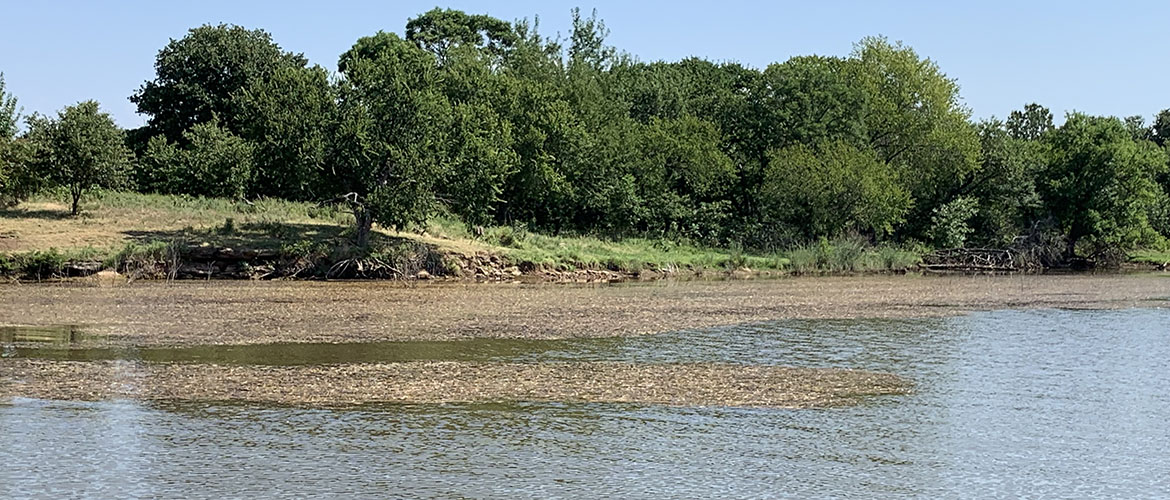
Treatment of Yellow Floating Heart at Lake Carl Blackwell exceeds expectations
Wednesday, November 27, 2019
The treatment of the invasive lily species Yellow Floating Heart at Lake Carl Blackwell was largely successful, according to OSU aquatic ecologists.
YFH is a non-native invasive species that is banned in many states and countries because of its tendency to take over bodies of water. It outcompetes native species and alters the ecology of whatever water body it inhabits. Lake Carl Blackwell is the only reservoir in Oklahoma known to be infested with YFH.
In July, approximately 1 percent of the lake’s area was treated with a selective, systemic herbicide, ProcellaCOR SC, which was approved by the EPA after eight years of testing. ProcellaCOR SC uses plant-specific hormones to control YFH and other broad-leaf plants. The EPA has rated it safe for drinking water.
OSU integrative biologist Dr. Andy Dzialowski, an expert in water quality, invasive species and reservoir management, leads the team that has been mapping the spread of the lily and the effectiveness of the treatment.
“After the end of the treatment period, the presence of Yellow Floating Heart was reduced by 96 percent, to just three acres of the plant visible in satellite and drone images,” Dzialowski said. “The difference between what’s present now and how much YFH was in the lake before is very encouraging.”
Water samples were taken at the water intake near the lake dam every day ProcellaCOR SC was applied, plus daily tests were done for three days after the last application. The water was then tested weekly from the intake at OSU’s water treatment plan for a month. Every ProcellaCOR test came back below detection level.
Since the treatment, some regrowth has occurred. Early in the next growing season, a second, much smaller spot treatment with ProcellaCOR SC is planned.
“There are places where regrowth occurred, including in some areas that are not easily accessible with an airboat,” Dzialowski said. “When the area experienced a significant drought, trees began growing where the water had receded. We are researching alternative deployment methods for the herbicide in these areas.”
The timing of the spot treatments will depend on temperature, plant growth and prevailing weather patterns.
“Oklahoma State University takes the safety of our community and the environment very seriously,” said Michael Robinson, chief public safety officer. “Before ProcellaCOR SC was selected, we verified that the product had been tested and approved by the EPA for use in drinking water sources and posed no threat to humans or livestock. We are extremely pleased with the safety of this product and the effectiveness of the treatment program. YFH had become a serious threat, not only to Lake Carl Blackwell but also to other bodies of water in our state, where it could spread. This program has been a safe and very effective solution to the problem. We could not be happier with the results.”
MEDIA CONTACT: Shannon Rigsby | Public Information Officer | 405-744-9081 | shannon.rigsby@okstate.edu
